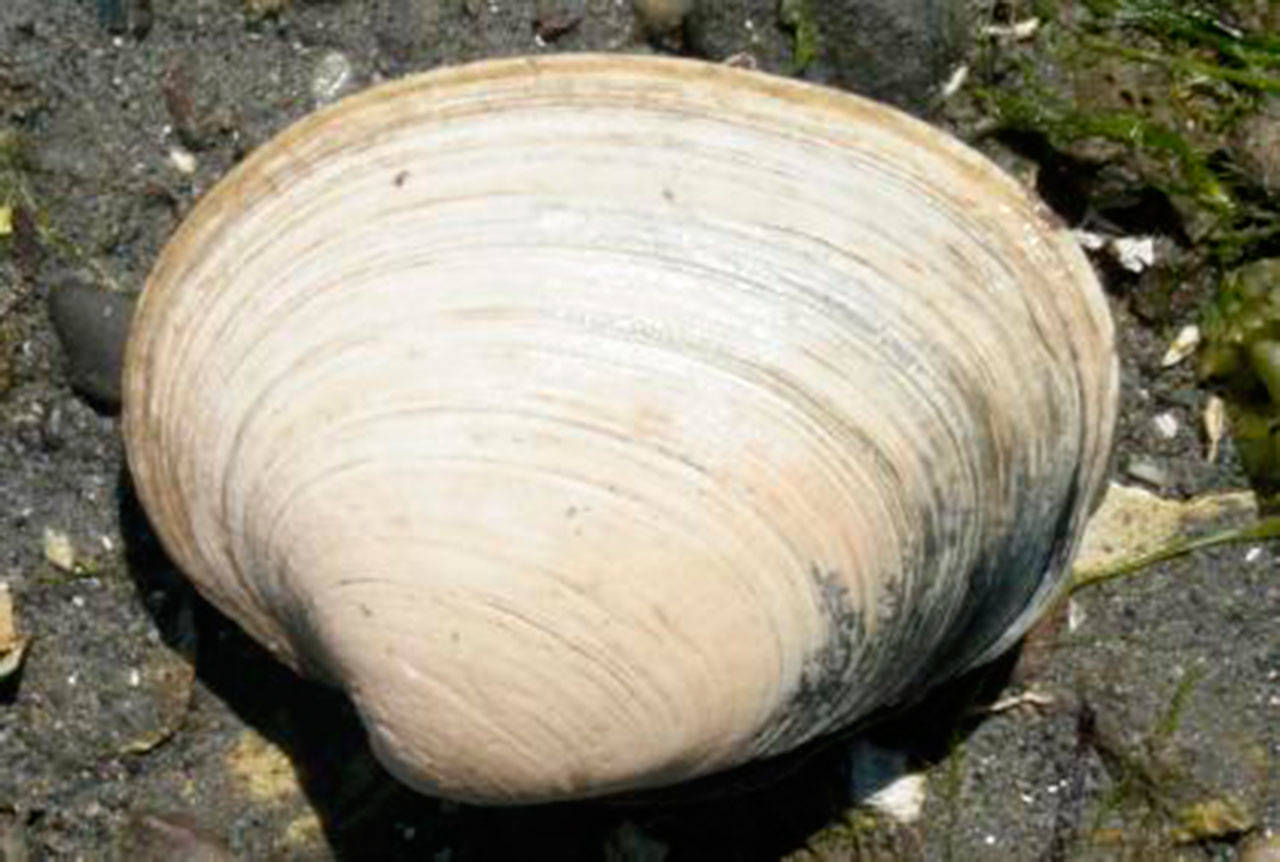OLYMPIA — Beaches in Clallam and Jefferson counties are closed to shellfish harvesting because of high levels of the marine biotoxin that causes Paralytic Shellfish Poisoning.
Shellfish harvesting of all species is closed in Clallam County along the Strait of Juan de Fuca from Cape Flattery east to the Jefferson County line, and in Jefferson County, Oak Bay, Port Ludlow, including Mats Mats Bay and Kilisut Harbor, including Fort Flagler State Park and Mystery Bay.
The closure includes Sequim Bay, which last week was open to butter and varnish clams only, and Discovery Bay.
Ocean beaches are closed for the season.
The closure includes clams, oysters, mussels, scallops and other species of molluscan shellfish.
Shellfish harvested commercially are tested for toxin prior to distribution.
Crab meat is not known to contain the biotoxin but the guts can contain unsafe levels. To be safe, clean crab thoroughly and discard the guts (sometimes called the “crab butter”).
Marine biotoxins are not destroyed by cooking or freezing. People can become ill from eating shellfish contaminated with the naturally occurring marine algae.
Symptoms of Paralytic Shellfish Poisoning (PSP) can appear within minutes or hours and usually begins with tingling lips and tongue, moving to the hands and feet, followed by difficulty breathing, and potentially death. Anyone experiencing these symptoms should contact a health care provider immediately. For extreme reactions call 9-1-1.
In most cases the toxic algae cannot be seen, and must be detected by a laboratory. So recreational shellfish harvesters are urged to call the Shellfish Safety Hotline at 800-562-5632, or visit the Department of Health’s Shellfish Safety website at www.doh.wa.gov/shellfish safety before harvesting anywhere in the state.
Due to COVID-19, Washington state requires social distancing during all outdoor activities including recreational shellfish harvesting. If six-foot distancing is not possible, harvesters are urged to wear masks and limit group size to five or less.
Shrimp to reopen
Recreational spot shrimp will reopen in Marine Areas 6, 7 West, 7 East and 9 this week, the Washington Department of Fish and Wildlife announced Friday.
The Puget Sound spot shrimp fishery, like other fisheries, has seen historically high participation this season. This led to some areas being closed earlier than anticipated.
“Our priority is to balance conservation of resources alongside offering recreational opportunity,” said Katelyn Bosley, WDFW Puget Sound crustacean biologist.
Following review of recreational shrimping catch and effort data in Puget Sound to date, WDFW has determined that sufficient quota remains to offer additional harvest opportunity in Marine Areas 6, 7 West, 7 East, and 9.
Areas opening for recreational spot shrimp harvest include:
Marine Area 6 (Port Angeles Harbor, eastern Strait of Juan de Fuca, excluding the Discovery Bay Shrimp District): Wednesday, Thursday and Aug. 15 and 16. Daylight hours.
Marine Area 9 (Edmonds, Port Townsend Bay, Admiralty Inlet): Open from 9 a.m. to 1 p.m. on Wednesday.
The daily limit is 10 pounds of all species of shrimp with a maximum of 80 spot shrimp in areas open to spot shrimp harvest. Only pots with a minimum 1-inch mesh are allowed when retaining spot shrimp.
Targeting of non-spot shrimp fishing using pots with minimum ½-inch mesh size will be suspended temporarily in Marine Area 9 from 1 p.m. Wednesday until official sunrise on Thursday. Non-spot shrimp harvest will open normally on Thursday.
A valid 2020-21 combination license, shellfish license, or Fish Washington license is required to participate in the fishery.
WDFW managers remind shrimpers that traps can be set one hour before official sunrise during any open period in the marine areas without specified harvest hours. The pots must be removed from the water in these same areas by one hour after sunset at the end of an open period.
More information on recreational shrimp seasons, and a description of the marine areas, is available on WDFW’s recreational shrimp fishing section at www.wdfw.wa. gov/fishing/shellfishing- regulations/shrimp/areas.
Halibut webinars
The Washington Department of Fish and Wildlife is hosting two public webinars to discuss season structure and proposed dates for the 2021 sport halibut season.
“Even though this year’s sport halibut fishing is just getting started in coastal areas and resuming in the Puget Sound, it’s important to us that we hear from stakeholders as this year’s season progresses,” said Heather Hall, WDFW coastal policy coordinator. “Your feedback now will help inform how we implement next year’s halibut season.”
The public is invited to participate in two virtual meetings from 1 p.m. to 4 p.m. Aug. 19, and 9 a.m. to noon on Oct. 28. Meeting details and instructions for tuning in are available at www.tinyurl.com/halibut webinars.
At the Aug. 19 meeting, state halibut managers will review preliminary 2020 season data to develop a range of preliminary options focused on general concepts, such as ways to balance predictability with opportunities to extend seasons. WDFW staff will utilize the input to develop recommendations to the Pacific Fishery Management Council, which will consider this preliminary input at its September webinar Sept. 11-18.
Washington stakeholders will have another opportunity to provide input once staff present PFMC results at the second WDFW webinar in October. In addition to refining the options developed at the first meeting, WDFW staff will collect further public input, review tide calendars for next spring, and select specific season dates that attempt to balance needs across various non-tribal fishing communities and charter and private fishing interests.
WDFW staff will consider this input and submit a preferred option for the PFMC to consider for final action at its November meeting, currently scheduled as an in-person meeting in Garden Grove, Calif., Nov. 13-20, 2020.
In addition to providing input to WDFW, stakeholders can also provide public comment to PFMC. Go to the PFMC web page for more information at www.pcouncil.org.

